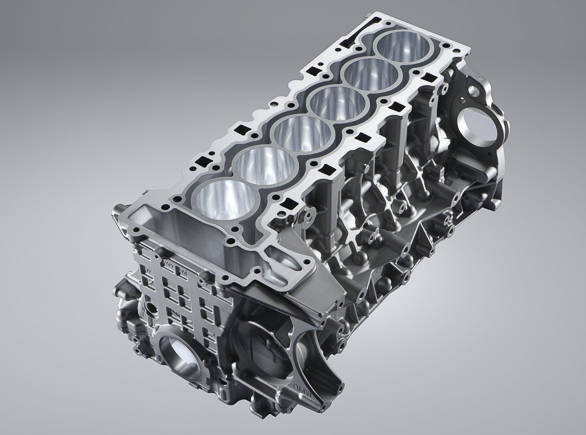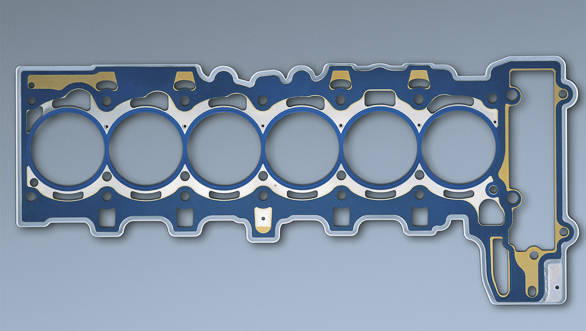Simple tech: Seals and gaskets explained
When was the last time you sat down to discuss seals and gaskets? Forget with your friends, even with your mechanic? Never, eh? As unimportant as they sound, a blown seal or gasket can easily grind any engine to a complete halt. Your mechanic gets this, and you
really should pay attention too.
I have seen ships, carrying millions of dollars of cargo stuck in the middle of the ocean with a broken gasket on some small part inside a three-storey tall engine!

Seals and gaskets lurk at pipe joints and in our case, where parts of machinery meet each either, in the engine, gearbox, differential etc.
Seals and gaskets perform two functions. First is to prevent the intermixing of different fluids, say inside an engine. For example, keeping lubricating oil, coolant, air-fuel mixture, exhaust gases etc, all separated from each other. The second function is to prevent fluids from inside the engine from spilling out.
Why should we worry about leaks? They're wasteful, obviously. They dirty the surroundings and can present a fire hazard. If enough lubricant leaks out, you can also end up seizing the engine. A coolant leak can damage the engine and strand you too. A leak in the engine can drop performance and raise fuel consumption.
On the flip side, the mixing of fluids can be catastrophic too. Coolant and engine oil together will corrode bearings and eventually cause an expensive failure.
Hot combustion gases mixing with coolant can overheat the engine and the same gases hanging out with lubricating oil with cause the oil's quality and function both to drop faster than normal. How to see if this is happening? The coolant oil will turn black very rapidly after fresh oil is added to the engine if there is a gas leakage in the engine.
The colour of the exhaust is also a good diagnostic. Black smoke means improper combustion - we already know this. Blue smoke is usually lubricating oil finding its way into the combustion chamber, usually means that your piston rings aren't sealing well. Or a gasket has failed somewhere. White smoke means water inside the combustion chamber. Also via a broken gasket most likely.
Why is all this required? No matter how carefully you machine it, two mating surfaces will always have some irregularity. And usually, fluid under pressure will find a gap to squeeze out. A gasket or seal deforms under the pressure of the two parts and takes up the irregularities' shapes on both sides to create a complete seal. The most common gasket you will hear about is the flat 'plate' that goes between the engine head and the cylinder block. Its job is to ensure that what's inside the combustion chamber cannot leak out. And what's outside it, cannot pollute/dilute what is inside either.
The way to prevent all of these ways of catastrophic failures is to use the right gasket or seal in the right place. Gaskets are usually made of paper, rubber, metal, cork, silicon, nitrile rubber fibreglass, plastic, a selection of plastic polymers and other materials. The selection of which materials depends on the properties required.

When any gasket is compressed between the two mating surfaces by nuts-bolts or screws, they take up the shape of the surface irregularities and provide a sealed, continuous contact between the metal surfaces. The perfection of the seal prevents fluids inside the system from leaking out and the outer atmosphere from entering. And, of course, it prevents the intermixing of fluids as well.
How hard the gasket or seal compresses is an important thing to pay attention to. Too much compression can damage the gasket and too little won't seal properly. That's why you should follow the manufacturer's bolt torque recommendations.
The other thing we should realise is that like tyres or fuel, gaskets and seals are also consumables. They don't last the life of the engine. They most certainly are cheaper to replace than engine hard parts and you really should spend the money when the time comes to replace the seals or gaskets with new ones so that your engine can keep on running like new.
Related Stories
Top Stories
Latest Videos
Most Popular
- Upcoming Mahindra XUV 3XO: All you need to know
- Budget Sportbike Showdown: Kawasaki Ninja 500 vs Aprilia RS 457 vs Yamaha YZF-R3
- New Suzuki Swift spotted testing
- Nissan Magnite EZ-Shift review - is the AMT any good?
- 2024 Hyundai Creta vs Toyota Urban Cruiser Hyryder vs Skoda Kushaq comparison review - the hype is real?














